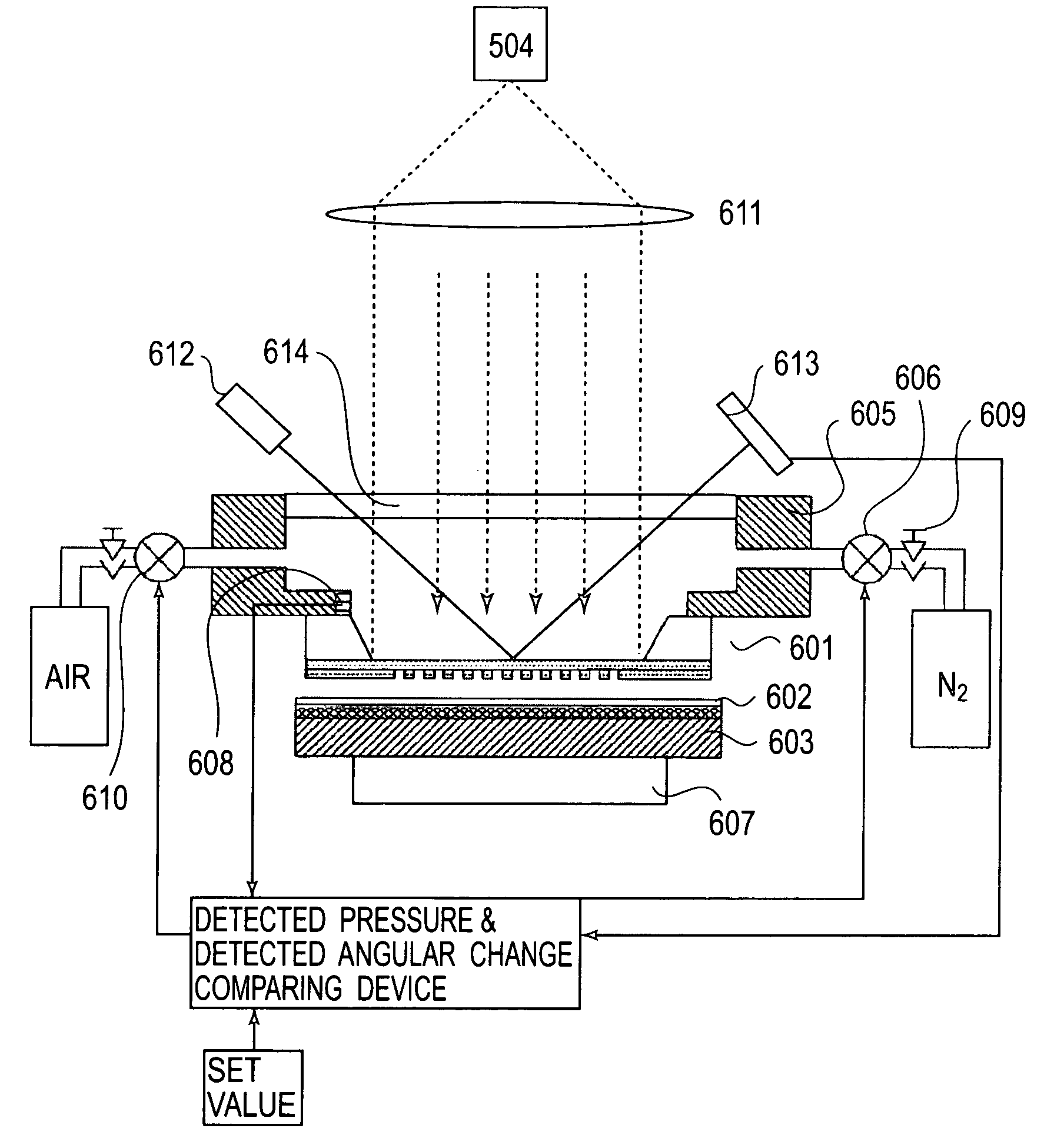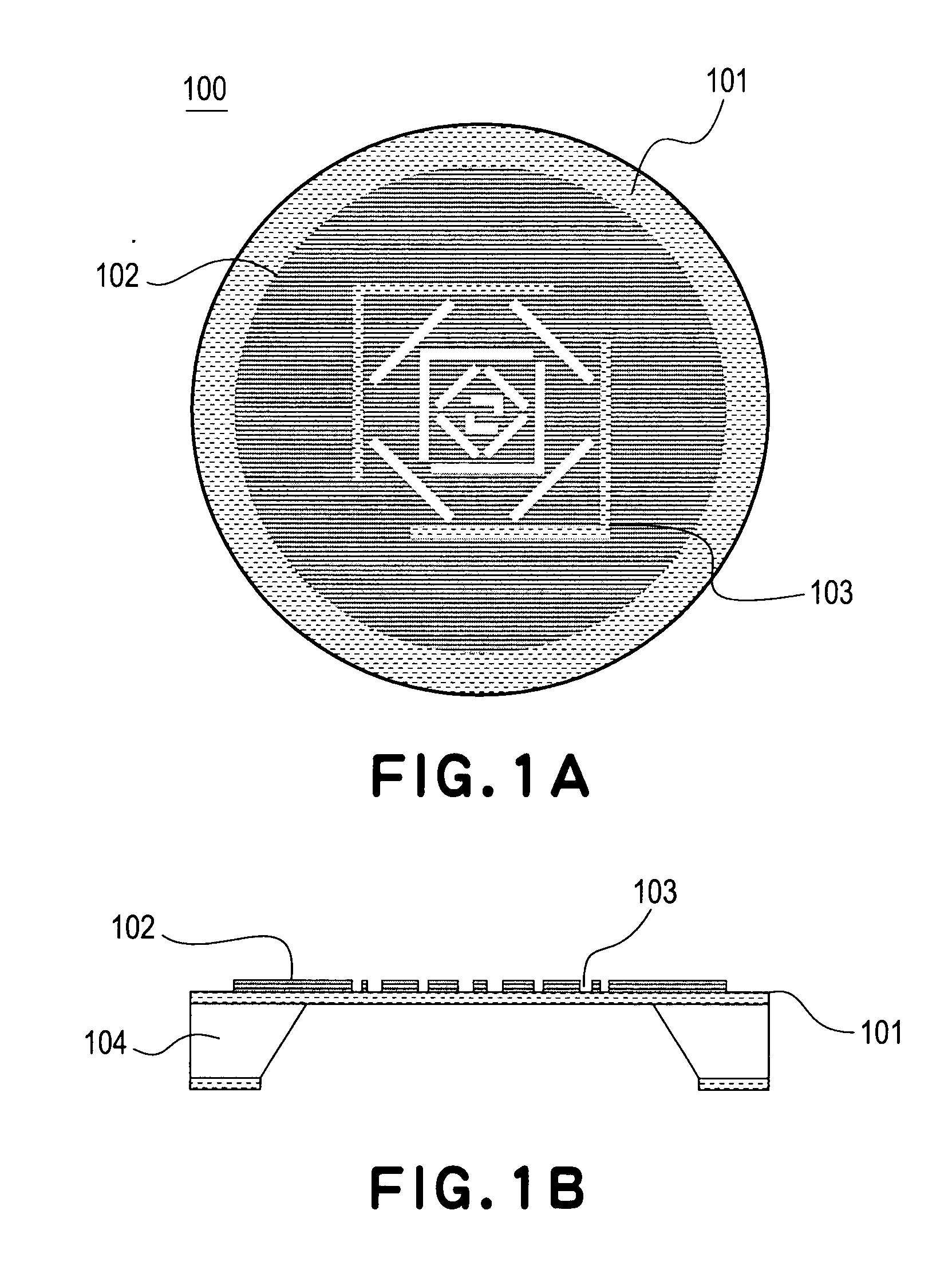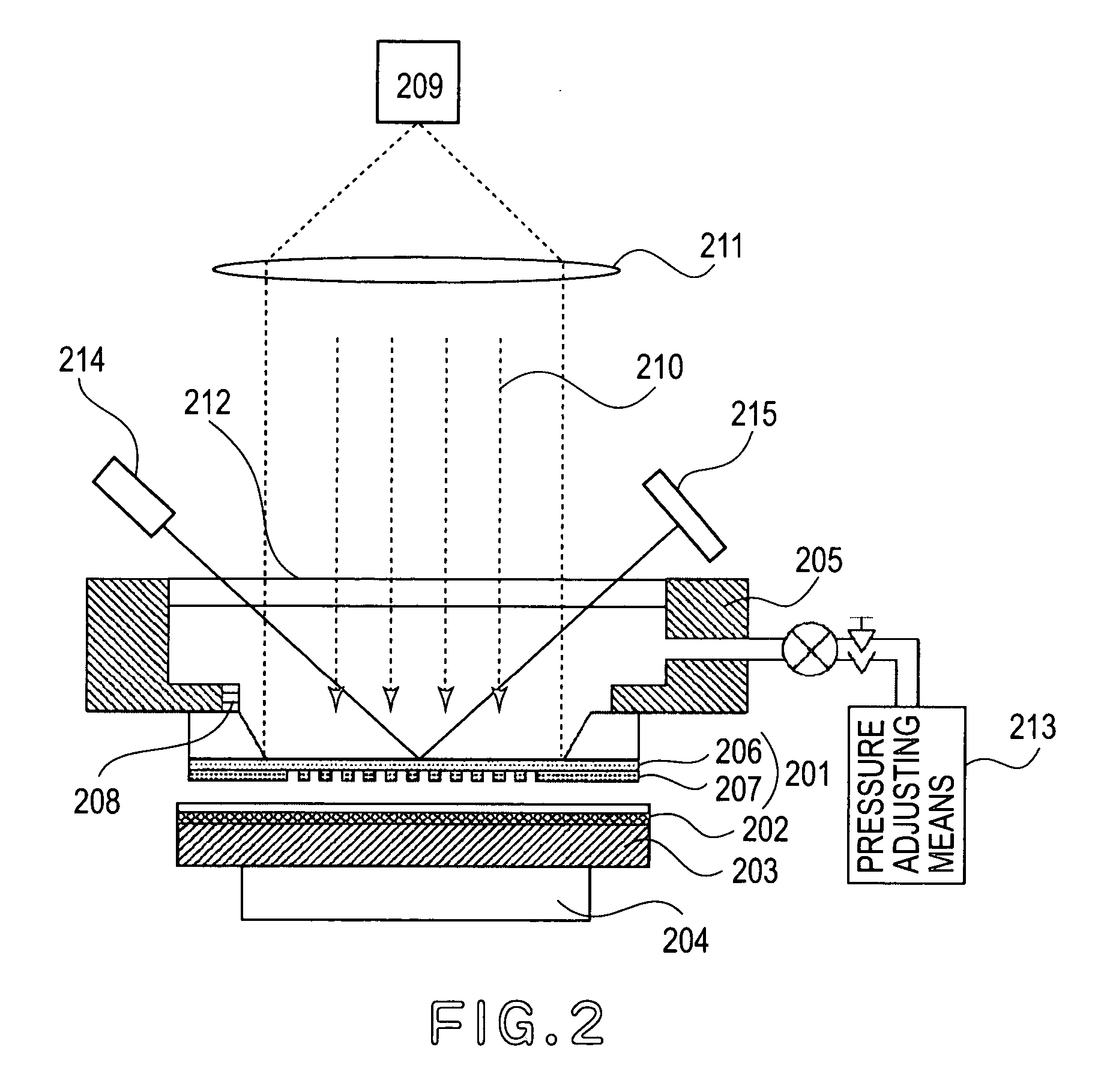Method of detecting attracting force between substrates, and near-field exposure method and apparatus
a technology of attraction force and substrate, which is applied in the direction of photomechanical equipment, instruments, printing, etc., can solve the problems of mask breakage, difficult for projection exposure equipment to produce a pattern of 0.10 m or less, and difficult to achieve exposure, so as to prevent the mask from breaking, the effect of yield and throughput for wafers and glass substrates
- Summary
- Abstract
- Description
- Claims
- Application Information
AI Technical Summary
Benefits of technology
Problems solved by technology
Method used
Image
Examples
Embodiment Construction
[0036] Preferred embodiments of the present invention will now be described with reference to the attached drawings.
[0037] First, an embodiment of detecting means for detecting an attraction force acting between an exposure mask and an object to be exposed, in accordance with the present invention will be described.
[0038]FIGS. 1A and 1B illustrate the structure of an exposure mask which is the subject of breakage prediction to be performed in accordance with a breakage predicting method of the present invention. FIG. 2 shows the structure of an exposure apparatus arranged to predict breakage of an exposure mask in accordance with the breakage predicting method of the present invention.
[0039] Referring to FIGS. 1A and 1B, an exposure mask 100 of the present invention will be explained.
[0040]FIGS. 1A and 1B shows an exposure mask which is used in the exposure apparatus shown in FIG. 2, wherein FIG. 1A illustrates the front face side of the mask, and FIG. 1B is a sectional view the...
PUM
| Property | Measurement | Unit |
|---|---|---|
| size | aaaaa | aaaaa |
| distance | aaaaa | aaaaa |
| thickness | aaaaa | aaaaa |
Abstract
Description
Claims
Application Information
 Login to View More
Login to View More - R&D
- Intellectual Property
- Life Sciences
- Materials
- Tech Scout
- Unparalleled Data Quality
- Higher Quality Content
- 60% Fewer Hallucinations
Browse by: Latest US Patents, China's latest patents, Technical Efficacy Thesaurus, Application Domain, Technology Topic, Popular Technical Reports.
© 2025 PatSnap. All rights reserved.Legal|Privacy policy|Modern Slavery Act Transparency Statement|Sitemap|About US| Contact US: help@patsnap.com



